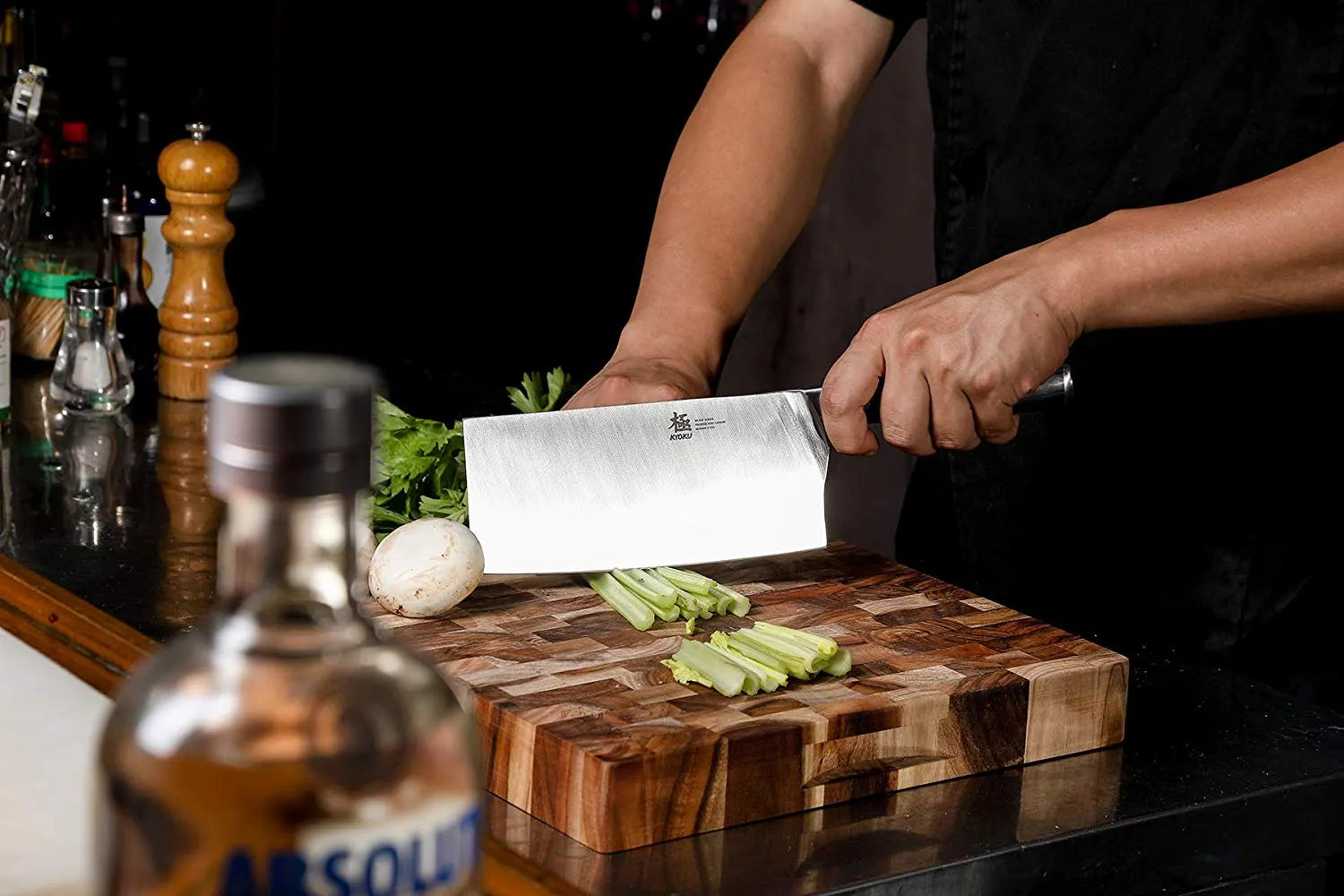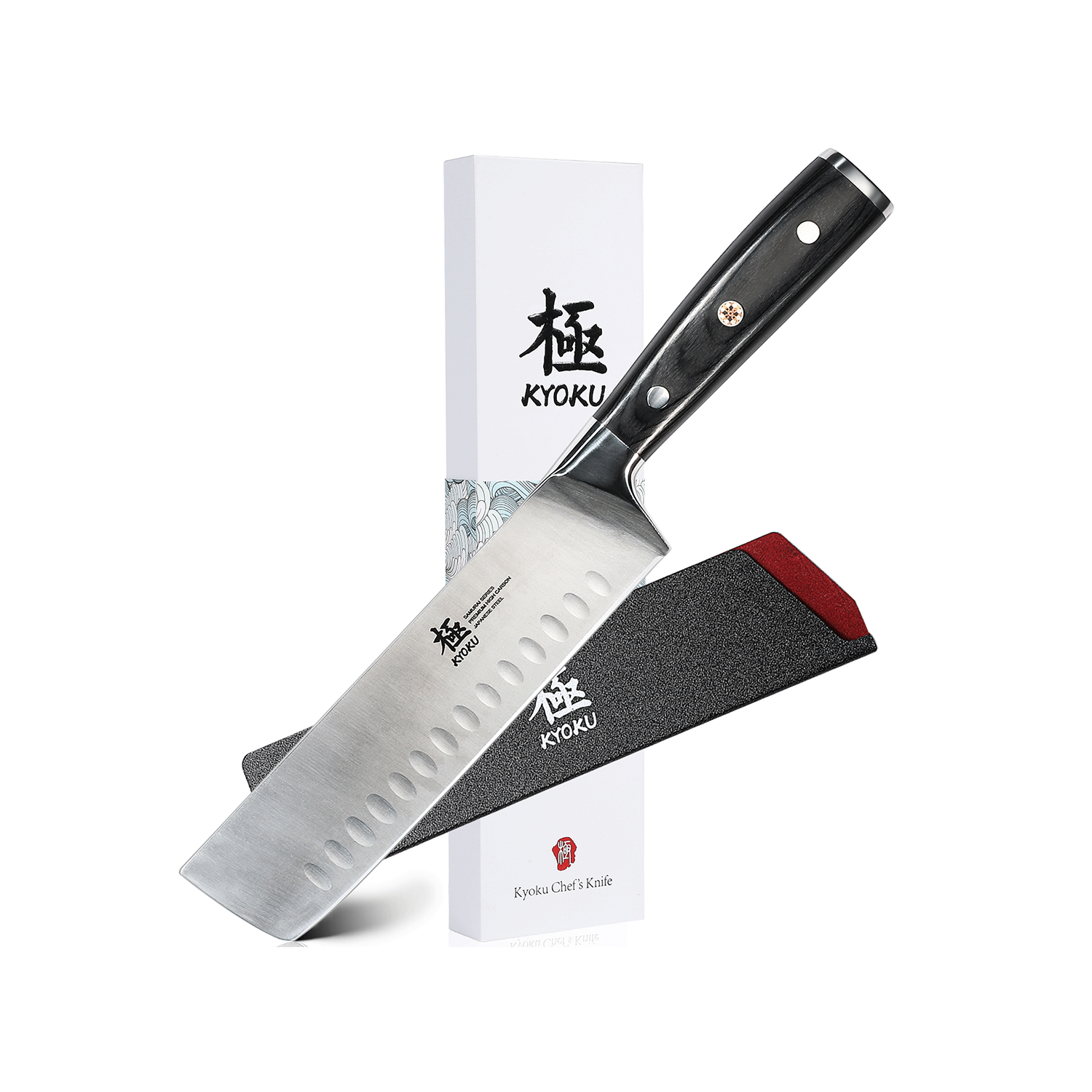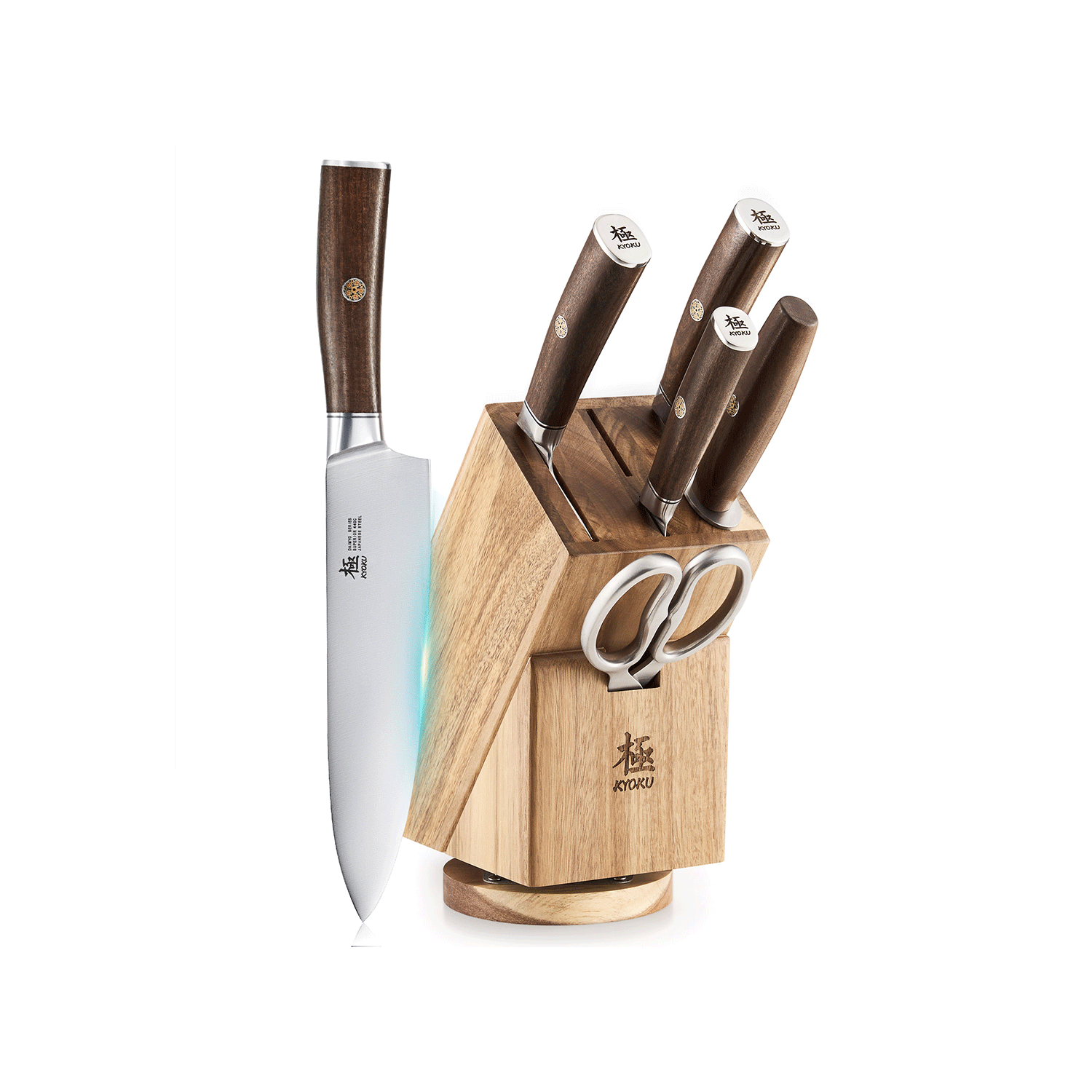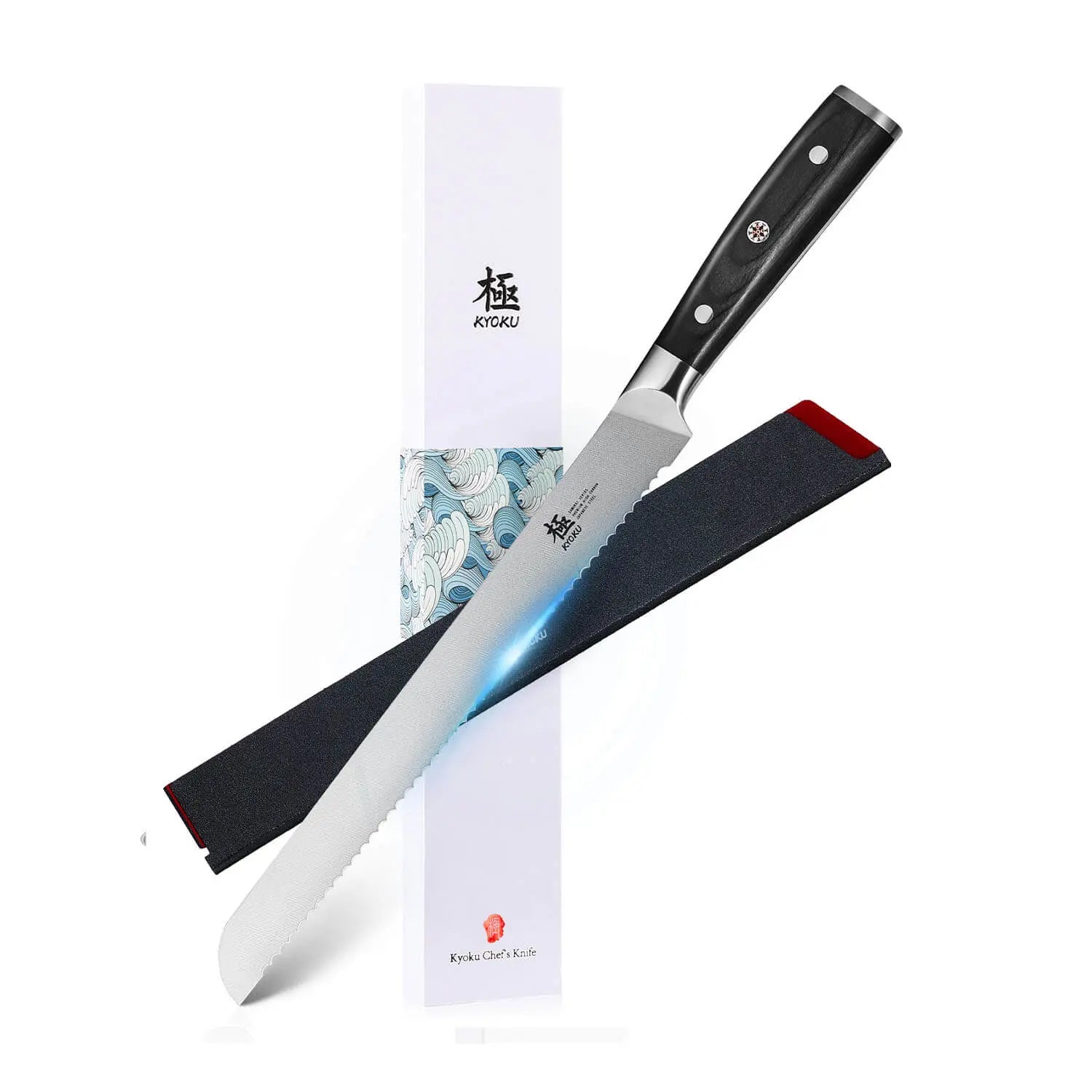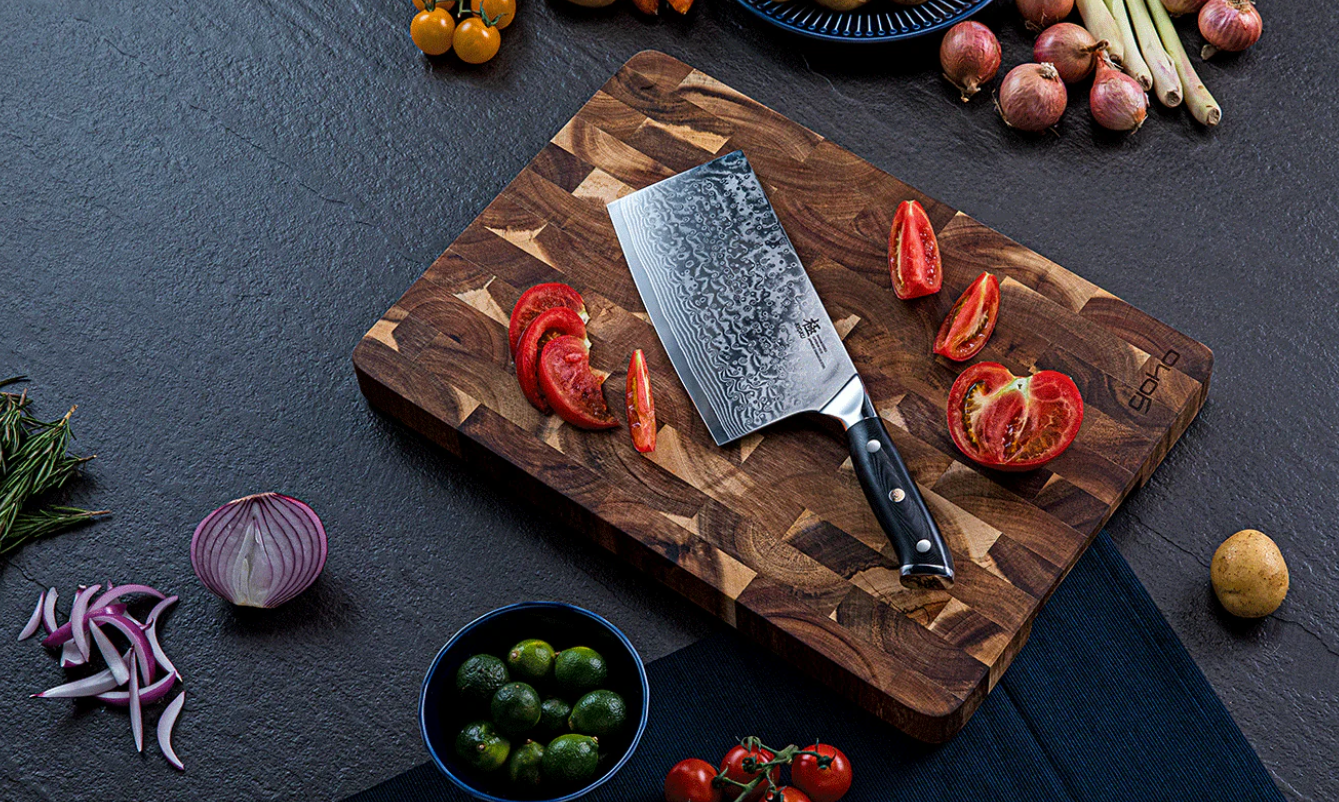In the culinary world, few knives command attention and respect quite like the mighty cleaver knife. With its robust build and formidable presence, the cleaver knife is a kitchen essential that embodies both power and versatility. This guide will explore the world of cleaver knives, focusing on how to use a cleaver knife to unlock your kitchen’s potential.
WHAT IS A CLEAVER KNIFE USED FOR?
A cleaver knife, commonly referred to as a meat cleaver, is a multifunctional kitchen tool designed for handling substantial cuts of meat. Characterized by its wide, rectangular blade and robust build, this knife is perfectly suited for a variety of demanding tasks. It excels at chopping through bones, breaking down poultry and other kinds of meat, making it an essential tool for both professional chefs and home cooks.
Beyond meat processing, the cleaver is also highly effective for other kitchen duties. Its sturdy blade can smash garlic, crush spices, and mince herbs with precision and ease, demonstrating its versatility in a wide range of culinary applications.
HOW TO USE A CLEAVER KNIFE: A Step-by-step Guide
After understanding the unique design and uses of the cleaver knife. Here is how you can make the most of this powerful kitchen tool:
1. Grip the Handle Firmly: Start by holding the cleaver knife firmly with a secure grip on the handle. Position your hand comfortably to maintain control throughout the cutting process.
2. Select the Appropriate Cutting Surface: Use a sturdy cutting board that can handle the impact of the cleaver knife without sustaining damage. Wooden or plastic cutting boards are ideal as they are durable and less likely to dull the blade.
3. Stabilize the Ingredient: Place the ingredient firmly on the cutting board. Make sure it is stable and won’t shift as you apply pressure with the cleaver knife.
4. Choose Your Cutting Technique:
- Chopping: For larger, thicker cuts, align the blade of the cleaver knife with the desired cutting line and chop down forcefully. Ensure your motions are steady and controlled.
- Rocking Motion: For finer cuts, use a rocking motion. Hold the cleaver knife by the handle and rock the blade tip back and forth over the ingredient. This method is excellent for mincing or finely chopping.
- Smashing: Use the flat side of the blade to smash ingredients like garlic or ginger. Firmly press down the cleaner knife to crush them effectively.

5. Apply Controlled Downward Force: Depending on the chosen technique, use a controlled downward force, leveraging your hand and arm strength. Adjust the force as necessary to cut efficiently and safely.
6. Repeat as Needed: If you are dealing with larger pieces of meat or multiple ingredients, you might need to repeat your chosen cutting motion several times to achieve the desired results. Pause periodically can prevent fatigue.
7. Clean and Maintain the Cleaver knife: After each use, wash the cleaver knife with warm, soapy water and dry it thoroughly. Store it in a safe place with the blade protected to preserve its sharpness. Regularly sharpening the cleaver knife can maintain its peak performance.
6 Popular Cleaver Knives on the Market
When it comes to selecting the best cleaver knives, several exceptional options can stand out on the market. These knives have garnered praise for their quality craftsmanship, durability, and superior performance in the kitchen.
1. Kyoku 7-inch Cleaver Knives
The Kyoku 7-inch Cleaver knives are a testament to expert craftsmanship and superior performance. Ideal for both professional and home kitchens, these knives exemplify Kyoku's commitment to top-quality cutlery with its powerful precision and elegant design. There are five series of cleaver knives in the Kyoku-Shogun series, Samurai series, Daimyo series, Gin series, and Koi series. Cleaver knives of different series have different characteristics, each designed for your specific needs.
2. Wusthof Classic Cleaver Knife
Renowned for their precision and German engineering, Wusthof knives are a staple in many kitchens. The Wusthof Classic 7-inch Cleaver boasts a full-tang construction, a high-carbon stainless steel blade, and a comfortable handle. Its versatile design allows for effortless chopping, mincing, and slicing, making it a favorite among both professional chefs and home cooks.
3. Shun Vegetable Cleaver Knife
Shun knives are acclaimed for their exquisite craftsmanship and exceptional sharpness. The Shun Classic 7-inch Vegetable Cleaver is no exception. With its Damascus-clad stainless steel blade and D-shaped PakkaWood handle, this cleaver offers precise control and effortless cutting. Its wider blade excels at slicing through fruits, vegetables, and boneless meats.
4. Zwilling J.A. Henckels Twin Signature 7-inch Vegetable Cleaver
Zwilling J.A. Henckels is a trusted name in the culinary world, and their Twin Signature 7-inch Vegetable Cleaver showcases their dedication to quality. Crafted from high-carbon stainless steel, this cleaver features a comfortable handle and a sturdy, sharp blade. Its versatility shines in tasks such as chopping, dicing, and smashing garlic.
5. Dalstrong Gladiator Series 7-inch Cleaver
The Dalstrong Gladiator Series combines exceptional performance with striking aesthetics. The 7-inch Cleaver from this series features a precision-forged, high-carbon German steel blade, meticulously tapered for improved flexibility and minimal slicing resistance. The ergonomic handle ensures comfort and control during use, making it a reliable tool for heavy-duty tasks.
6. Mercer Culinary Genesis 6-inch Forged Cleaver
Mercer Culinary offers professional-grade knives at an affordable price point, and their Genesis 6-inch Forged Cleaver is a standout option. This cleaver is forged from high-carbon, stain-resistant German steel and features a comfortable Santoprene handle. Its smaller size makes it suitable for both home and professional kitchens, providing excellent maneuverability without compromising power.
Remember, choosing the best cleaver knife ultimately depends on your personal preferences and specific needs in the kitchen. Consider factors such as blade material, handle comfort, and intended use to find the cleaver knife that perfectly complements your culinary journey.

How to Distinguish Between a Cleaver Knife and a Butcher Knife?
Cleaver knives and butcher knives are often confused due to their common use in meat preparation, making it essential to distinguish between them. The differences between a cleaver knife and a butcher knife lie in their design, functionality, and intended use. As this guide just introduces, cleaver knives, with their wide, rectangular blades and thick spines, are built for heavy-duty tasks like chopping bones and tough meat. In contrast, butcher knives have narrower, curved blades that are thinner, making them ideal for precise slicing, trimming, and portioning. While cleaver knives excel in brute force tasks, butcher knives offer more precision and control for detailed meat preparation. Choosing between them depends on whether your culinary tasks require power or finesse.
Conclusion
Whether you are a professional chef or a culinary enthusiast at home, mastering how to use a cleaver knife can undoubtedly elevate your cooking experience. By efficiently handling tasks that range from slicing through thick cuts of meat to delicately mincing garlic and herbs, the cleaver knife proves to be an indispensable tool in the kitchen.



